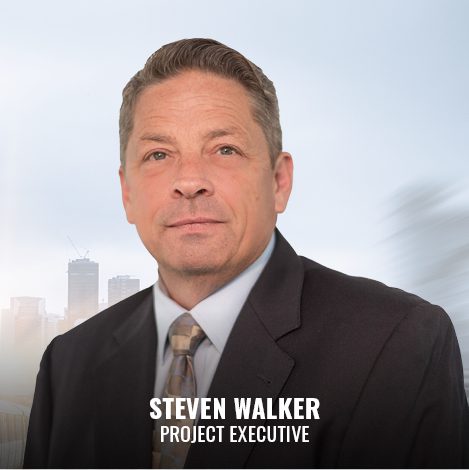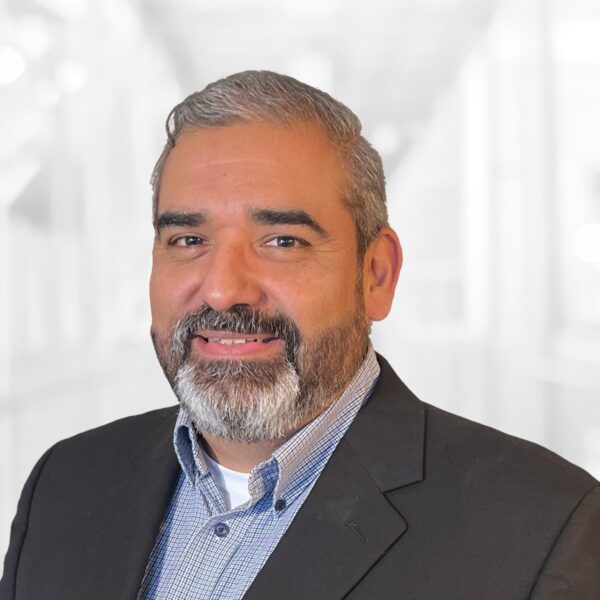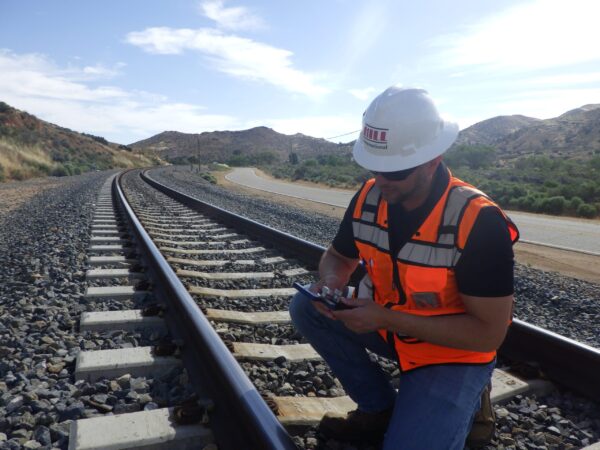
March 12, 2025 | Articles
Get Stoked: Hill International Makes Big Waves in Spain’s Surfing Scene

Read Part One here.
The breadth of knowledge required for a project manager in healthcare is extraordinary and reaches into many areas of healthcare facilities, including their operations and equipment needs. The understanding of patient throughput is the basis for working with clinical partners and building comprehensive levels of trust between capital teams and the rest of the organization. This experience is not built overnight and requires extensive training over time.
Throughout history there has always been some type of apprenticeship program or guild to offer training for every profession of skilled workers like stone masons, carpenters, and even artists. In the recent past, most healthcare systems provided training for their facilities and capital project teams to help them develop the knowledge to understand their organization-specific environment no matter what their area of expertise—whether design, construction, finance, or operations. That knowledge base is critical to capital program success.
The focus of training any staff is to shorten the learning curve in gaining experience in the field, allowing for quicker and better decision making. This is especially true during emergent conditions when time is of the essence. Events such as replacing or repairing critical equipment like emergency power generators or air handlers which manage temperature and air flow for operating rooms must be accomplished safely and efficiently in order reduce impact to ongoing patient care activities. For owners’ representatives, these trainings also include environment of care conditions and how they relate to everything from patient and staff safety to Hospital Consumer Assessment of Healthcare Providers and Systems (HCAHPS) scores, which are the foundation of hospital reimbursements from the Centers for Medicare & Medicaid Services (CMS) and “keep the doors open.”
Prior to 1900, gaps in knowledge demonstrated the need for experts from the healthcare industry to provide educational opportunities for new hospitals and their staff and brought on the formation of such organizations as the American Society of Healthcare Engineers (ASHE). ASHE was established in 1899 as the Association of Hospital Superintendents to facilitate discussion among hospital administrators for the improvement of hospital facilities and patient care. Today, ASHE guides those who maintain hospitals in line with compliance requirements from the Joint Commission, the inspection arm of CMS, established in 1977 as the Health Care Financing Administration. Similarly, the Association for the Advancement of Medical Instrumentation (AAMI), formed in 1965 as a vehicle to help introduce innovative medical devices into common medical practice and to set safety standards in both their design and usage; the National Fire Protection Association (NFPA), which worked to reduce the hospital fires that killed many patients throughout our history and continues to set the standards for healthcare safety guidelines; and many more have direct impacts on daily patient care.
These entities provided hospital-specific training at a reasonable cost and directly impacted the success of project teams at every level of the facility. The results of this training greatly enhanced healthcare organizations’ abilities to improve patient outcomes and HCAHPS end-user satisfaction scores, as there was a constant effort to improve the conditions of buildings and treatment options due to those upgrades which saved money and allowed for additional projects each fiscal year—HCAHPS scores have played a role in hospital reimbursement payments through the Hospital Value-Based Purchasing program as set by CMS.
For capital construction project teams over the last 15 to 20 years, there has been a deep reduction of experienced and trained staff due to the attrition that is natural in all professions, whether it is retirement or job changes such as promotions. It was exacerbated by downturns in the economy in 2007 and 2012, changes in CMS’s reimbursement rules for hospitals in the early 2000s in an effort to reduce the cost of healthcare for the country as a whole, and a host of other issues including COVID-19 and the shelving of capital projects due to a lack of funding and changing patient care models that these items created.
Due to these events and other factors, we have had a significant loss of qualified and experienced project team partners that struggle to identify potential problems early in capital planning, such as our A&E teams, CM and GC construction companies, their sub-contractors, and consultants that often supported the owners in project reviews of programming, constructability, budget estimates, proposed schedules, and compliance regulations. This impacts successful project delivery and reduces the opportunity to stay within proposed budgets and schedules, which in turn drives up costs and diminishes project satisfaction from the clients.
An example of the resulting deficiencies includes showers in patient rooms, which are responsible for many of the slips, trips, and falls that account for the majority of worker compensation claims in hospital systems. This is often due to improper design and construction of the shower room floors and the ability to pull water away from the doors and to the drain systems, which often leak due to improperly installed and tested collars.
Some of the strongest opinions and objections come from the clients of the hospital care teams when capital project teams that are responsible for designing buildings and ordering equipment do so lacking required knowledge and supply the project with choices that aren’t compatible with their existing systems such as nurse call, IT equipment, nurse call, fire alarm systems, and, most importantly, patient care programs, just to highlight a few. The additional cost of operations and lost man hours due to efficiency reductions have a long-reaching impact on future expansions and renovations as projects are put aside or prioritized project budgets are expanded to allow for these inefficiencies.
Many incoming owners’ representatives from other disciplines of construction or design don’t understand these issues are issues while they are assimilated into the realm of healthcare. Requesting funding to provide training for these individuals is often overlooked due to upfront costs and lost time doing the actual work of putting projects into use which leads to additional costs trying to rectify items that could have been anticipated and avoided.
Successful teams employ in-house expertise on the capital project planning team, which is essential to removing obstacles to well-planned and well implemented projects, providing resources to ensure that the early design and programming due diligence is complete. There are many ways of managing this, including hiring senior staff with previous experience on healthcare projects, which has been difficult due to the demand for such individuals in the marketplace. This then can allow for shadowing (training) on projects by less experienced staff.
Another solution to some of these ongoing development challenges on large capital programs is to bring in third-party support staff that can bring their experience and training to bear while the rest of the capital project staff gain their knowledge base in real time. This ensures your projects are being developed with that risk in mind and minimizes its impacts, while allowing planned projects to move forward.
Healthcare organizations have dramatically increased their outsourcing of capital planning and project management capacity when implementing major capital programs. Third-party project management and capital program staff can realize cost savings for clients through economies of scale. However, the risk associated with outsourcing a healthcare organization’s capital programming is they may continue to ignore the need to provide formal training to capital program staff. The benefit of third-party partnering is that the team is working alongside seasoned professionals and getting hands on training.
Additional options are joining associations like ASHE which provide ongoing classes locally at the regional level and mentoring to younger owners’ representatives or attending national events that provide cutting edge education on new building techniques and products as well as existing systems, such as medical equipment training on sterilization machines, light booms in an operating room and the requirements for limiting their movement, and CT or MRI scanners (most newly hired project managers don’t know how a MRI works) and their three zones for safe entry while the magnet is on.
Being proactive in the development of internal staff and partners from design and construction companies has far reaching effects on the financial health of hospital organizations and should not be dismissed in fiscal planning exercises. No matter your role in these efforts there is no greater feeling than to step onto an elevator in a hospital and hear a family of a patient remarking how grateful they are to be in a world-class facility that demonstrates a professional and expert approach to patient care.

About the Author
Steven Walker is a Project Executive at Hill International, Inc. He has more than 35 years of experience in the construction industry, with 18 years of healthcare project experience and 27 years of training and education in the capital process for healthcare projects. During his career, he has served in a variety of roles—such as journeyman carpenter, superintendent, project management staff, and senior manager for capital programs—on large-scale projects. Steven has worked at every level of project management from conception to first use within California’s HCAI and national AHJs.
For more information about successfully managing TJC’s EOC standards during capital construction, reach out to Steven at [email protected].
Share

March 12, 2025 | Articles
Get Stoked: Hill International Makes Big Waves in Spain’s Surfing Scene

March 9, 2025 | Articles
Project Manager TJ Pinales: Helping Along the Road in San Antonio

March 4, 2025 | Articles
Balancing the Equation: An Interview with Project Manager Tracy Wiyrick

March 1, 2025 | Articles
A Lifelong Project: Calypso Kyriakopoulou’s Multifaceted Career in Construction

February 10, 2025 | Articles
Dual Delivery: A Viable Strategy for Complex Transit Projects

January 23, 2025 | Articles
Plotting a Roadmap to Success on the Torres de Colón Renovation

December 12, 2024 | Articles
Progressive Design-Build for Rail and Transit Projects: Room to Run

December 9, 2024 | Articles
Unlocking Growth: Maximizing the Benefits of the SBA’s Mentor-Protégé Program

December 8, 2024 | Articles
Mediterranean Luxury a Century in the Making: Four Seasons Resort Mallorca at Formentor